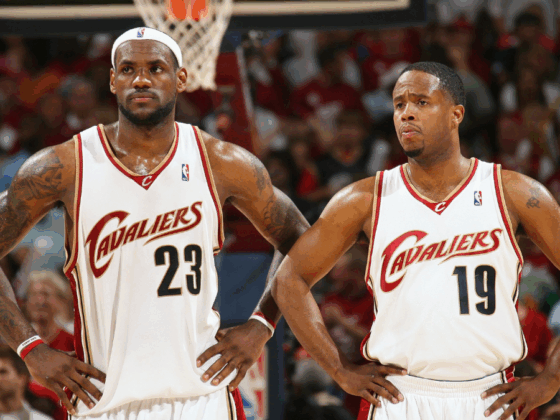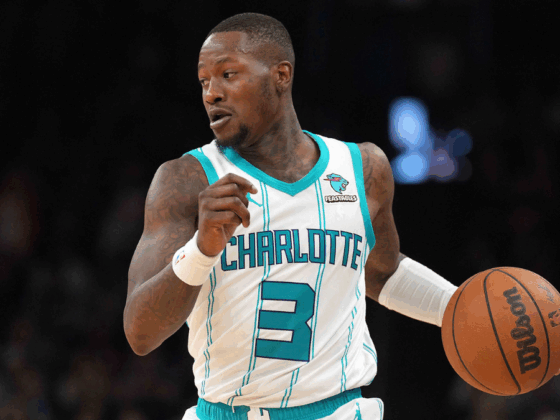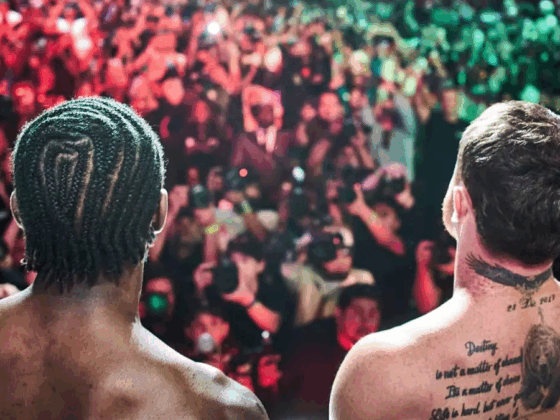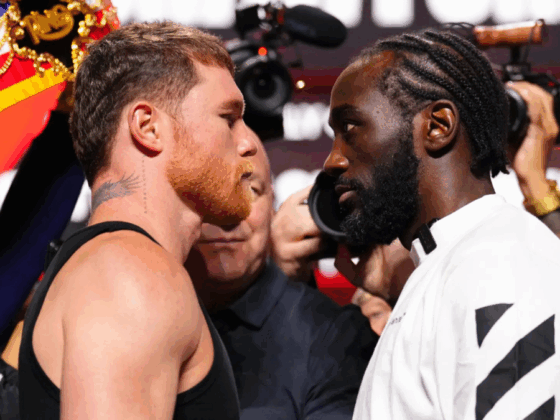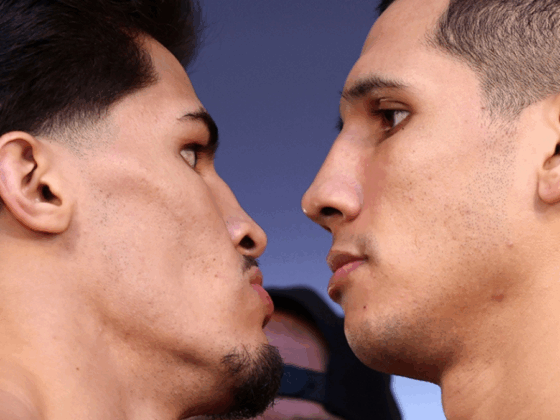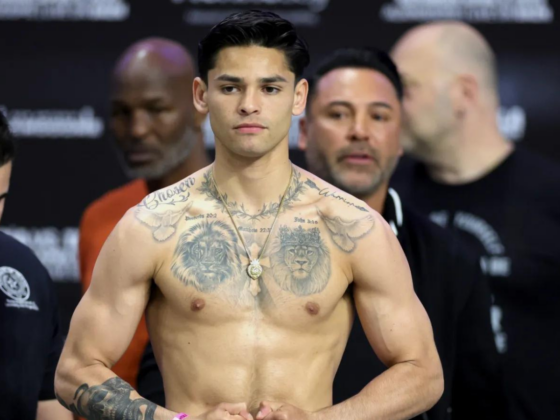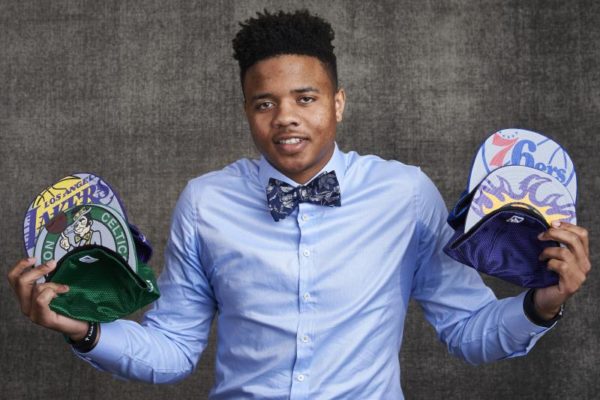
The number one pick in the NBA draft is one of the most coveted assets the league has to offer. It’s a dangerous asset that can sometimes lead to disappointment, but most often the pick leads to otherworldly NBA talent that can take over the league by force. Guys such as Yao Ming, LeBron James, Dwight Howard, Derrick Rose, Blake Griffin, Anthony Davis, Kyrie Irving, and Karl-Anthony Towns are all previous number one picks just within the past 20 seasons. But the odds of acquiring sure fire All-Star level talent isn’t guaranteed. Miss on the first overall pick and your team could end up with players who don’t live up to expectations, such as Andrea Bargnani, Anthony Bennett, or Kwame Brown. What hurts even more is when the team that picking after you selects someone such as LaMarcus Aldridge (picked after Bargnani) or Kevin Durant (picked after Greg Oden). Even worse is when a team with the fourth pick acquires a player who earns nine more all-star appearances than the first pick (As was the case with Andrew Bogut and Chris Paul). Being lucky enough to have all the ping pong balls fall your way is only half the battle. That luck means nothing if you waste it, fumbling away more impressive prospects.
Judging raw talent in college is an incredibly difficult assignment to use as a basis for how well a player will do at a level of basketball they have never experienced before. The rules in college are just different enough that it’s hard to confidently say how a player will translate when they step onto the bright lights of an NBA court. Every year we see players with high potential turn out to be incredible busts just as often as we see hidden talent explode onto the scene and compete for the Rookie of the Year award. My question on the day of the 2017 NBA Draft is; which pick actually yields the best talent on the most consistent basis? Since the year 2000, which individual pick has offered the widest array of talent and success?
Obviously, the number one pick is the spot you want to have. It consistently produces more elite talent than any other pick over the past 18 seasons despite the few busts that have failed either due to lack of understanding of the NBA game or, much worse, career-ending injuries. Does your team have the second pick in the draft or the third? It seems like such a minute difference that the gap in talent couldn’t be too substantial, but it is. Since the year 2000, the number two pick in the NBA draft has produced an All-Star only three times (Kevin Durant, LaMarcus Aldridge, and Tyson Chandler) while the number three pick in the draft has produced five (Pau Gasol, Deron Williams, Al Horford, James Harden, and Carmelo Anthony), plus Joel Embiid. The number three pick has also produced players such as Bradley Beal, Otto Porter Jr, Enes Kanter, Ben Gordon, and Derrick Favors while the number two pick features Emeka Okafor, Marvin Williams, Michael Beasley, and Evan Turner. If recent history tells us anything, the number three pick has more value than the second (looking at you, Los Angeles Lakers).

Hell, even the fourth pick has more value than number two. Chris Bosh, Mike Conley, Chris Paul, Russell Westbrook, and Kristaps Porzingis lead the number four train along with Shaun Livingston, Tristan Thompson, and Dion Waiters also being taken with the fourth pick. As the draft goes on and each pick is selected, the difference in talent remains lopsided. Taking a look at the eighth and ninth picks since 2000, the ninth pick is FAR and away the better pick to have. It’s the difference between Gordon Hayward and Al-Farouq Aminu, Kemba Walker and Brandon Knight, DeMar DeRozan and Jordan Hill, Amar’e Stoudemire and Chris Wilcox. Since 2000, six players taken ninth overall have been selected to an All-Star team, while zero players received the same accomplishment as the eighth pick. Taking a peak at Def Pen Hoops’ latest mock draft, for the 2017 NBA Draft, De’Aaron Fox was drafted number eight by the New York Knicks and Lauri Markkanen was drafted ninth by the Dallas Mavericks. *three thinking face emojis*
The number seven spot produces more NBA players on a yearly basis, the quality just isn’t as high as other picks. Even still, an expansive history of Jamal Crawford, NeNe Hilario, Kirk Hinrich, Luol Deng, Charlie Villanueva, Eric Gordon, Stephen Curry, Greg Monroe, Bismack Biyombo, Harrison Barnes, and Julius Randle is enough quantity to make the seventh pick a valuable selection. In a weird trend, the seventh and ninth picks seem to hold tremendous value, while the eighth pick is a graveyard of untapped potential.
After diving into who was taken with which pick, I was able to come to the conclusion that late lottery picks are almost useless (unless you’re drafting 15th). Teams are much better off picking 17, 18, or 19 instead of 12, 13, or 14. Picks 12-14 produce plenty of role players, but no superstars (at least not yet). Devin Booker, Dario Saric, and Zach LaVine are arguably the best players to come from these three spots over the past 18 seasons and they have still yet to make their mark on the league. Other notables from the 12-14 range include Richard Jefferson, Gerald Henderson, Thabo Sefolosha and even the man who was suppose to “rule the world” with his counterpart LeBron James yet never did, Sebastian Telfair. If you’re team can find a way to sink down to the 15th spot, you’re probably going to end up with a better prospect than the five picks before you. Kawhi Leonard, Giannis Antetokounmpo, Larry Sanders, and Al Jefferson were all selected 15th along with the up-and-coming Kelly Oubre Jr.
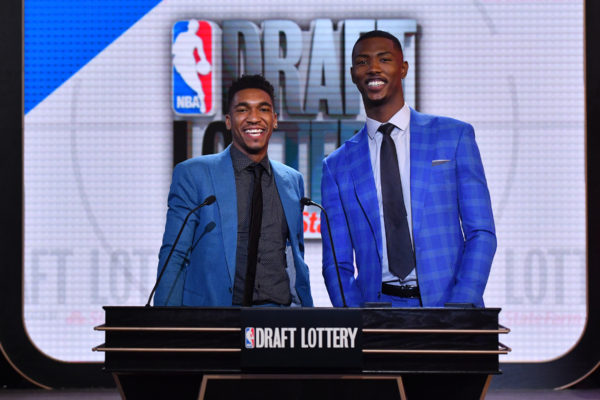
Looking for a big with size? The 16th pick is the spot for you. Roy Hibbert, Nikola Vucevic, Jusuf Nurkic, and Hedo Turkoglu are all 16th pick alums along with wing players such as Nick Young and James Johnson. After that, the talent is spread out. Danny Granger and Josh Smith went 17 as did Jrue Holiday. Zach Randolph, Avery Bradley, Jeff Teague, and Gary Harris were all picked 19. Then comes pick number 20 where you’d be hard-pressed to find All-Star potential. Ryan Anderson, Evan Fournier, and Jameer Nelson (who did make the All-Star game once in the 2008-09 season) lead the way but are accompanied by less-successful players such as Dahntay Jones, Brendan Haywood, Speedy Claxton, and Tony Snell. Perhaps the best picks to have in the late first round are actually right next to each other. Picks 23 and 24 have seen Tayshaun Prince, Serge Ibaka, Wilson Chandler, Kyle Lowry, Rudy Fernandez, Nicholas Batum, and Tim Hardaway Jr. Picks 25-29 have talent sprinkled throughout them, but not much to boast about. Rudy Gobert was drafted 27 and Tony Parker at 28, but you won’t see an influx in talent until the last pick in the first round. The 30th pick has recently seen Gilbert Arenas, Jimmy Butler, David Lee, and Anderson Varejao.
The second round, however, is a different story. The second round is riddled with talent that has huge question marks hanging over their heads and is sure to be important in the 2017 NBA Draft. Often times they are seen as project players with potential to grow over the years into viable role players, but sometimes they do the unexpected and take two or three leaps at a time instead of one. Draymond Green was drafted 34 and he takes the title as the best 34th pick since 2000 by a mile. Brian Scalabrine, Shelvin Mack, and Omer Asik aren’t even in the same stratosphere as Draymond and they were all taken 34th. Khris Middleton was a 39th pick, Nikola Jokic was a 41st pick, Marc Gasol was a 48th pick and Isaiah Thomas was the 60th and last pick of his draft and they are levels above anyone else that has come from those respective picks. One interesting note about the second round is that if you’re looking for a big man, the 33rd pick may be a good place to start. Hassan Whiteside, DeAndre Jordan, Brandon Bass, and Carlos Boozer have all come from the 33rd spot and they’re joined by a rising wing-player in Jae Crowder. Looking for shooters? The 43rd pick has recently produced Michael Redd, Trevor Ariza, and Marcus Thornton.
The NBA draft is a random mess and it’s clear that it doesn’t do what it should in a perfect world, and the 2017 NBA Draft will be no different. The NBA doesn’t exist in a perfect world, and that’s what makes it so exciting. Players develop late, injuries will destroy a career before it even begins, too much hype can psyche superb talent into “what-could-have-been” talent. The number one pick is the ideal spot to be in, but it’s never a guarantee and enough talent is scattered throughout the draft to make for some great stories. Markelle Fultz is expected to go number one in the 2017 NBA Draft by just about everyone, even more so after Boston traded the pick to Philly, and the odds show that he has the highest possibility to turn into a superstar. But who’s going to be the Jimmy Butler, or Giannis Antetokounmpo, or even the Isaiah Thomas of the 2017 NBA Draft?
